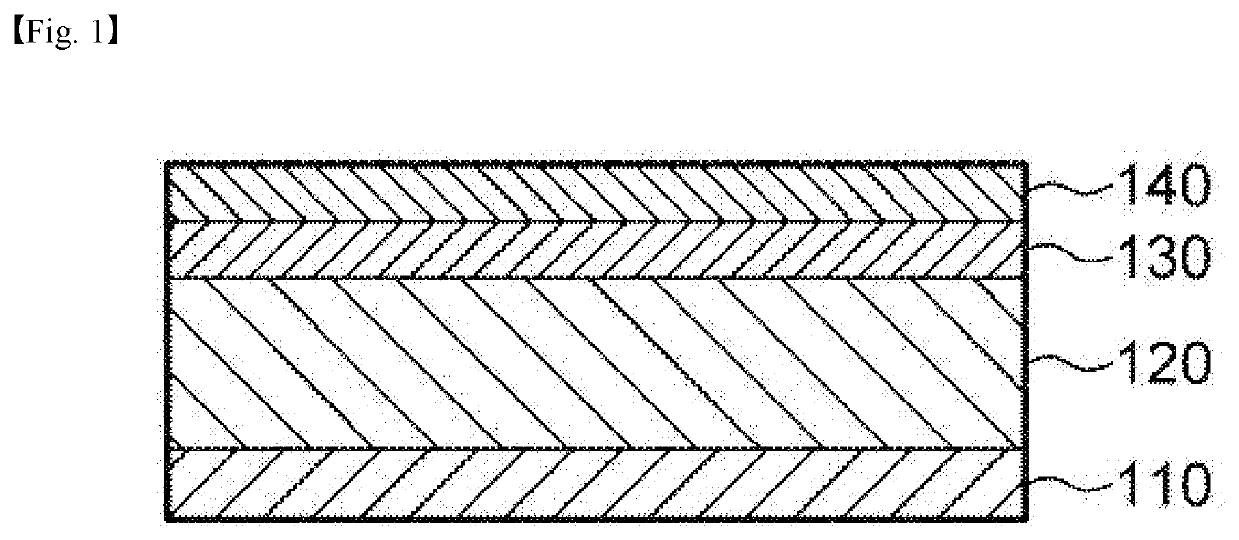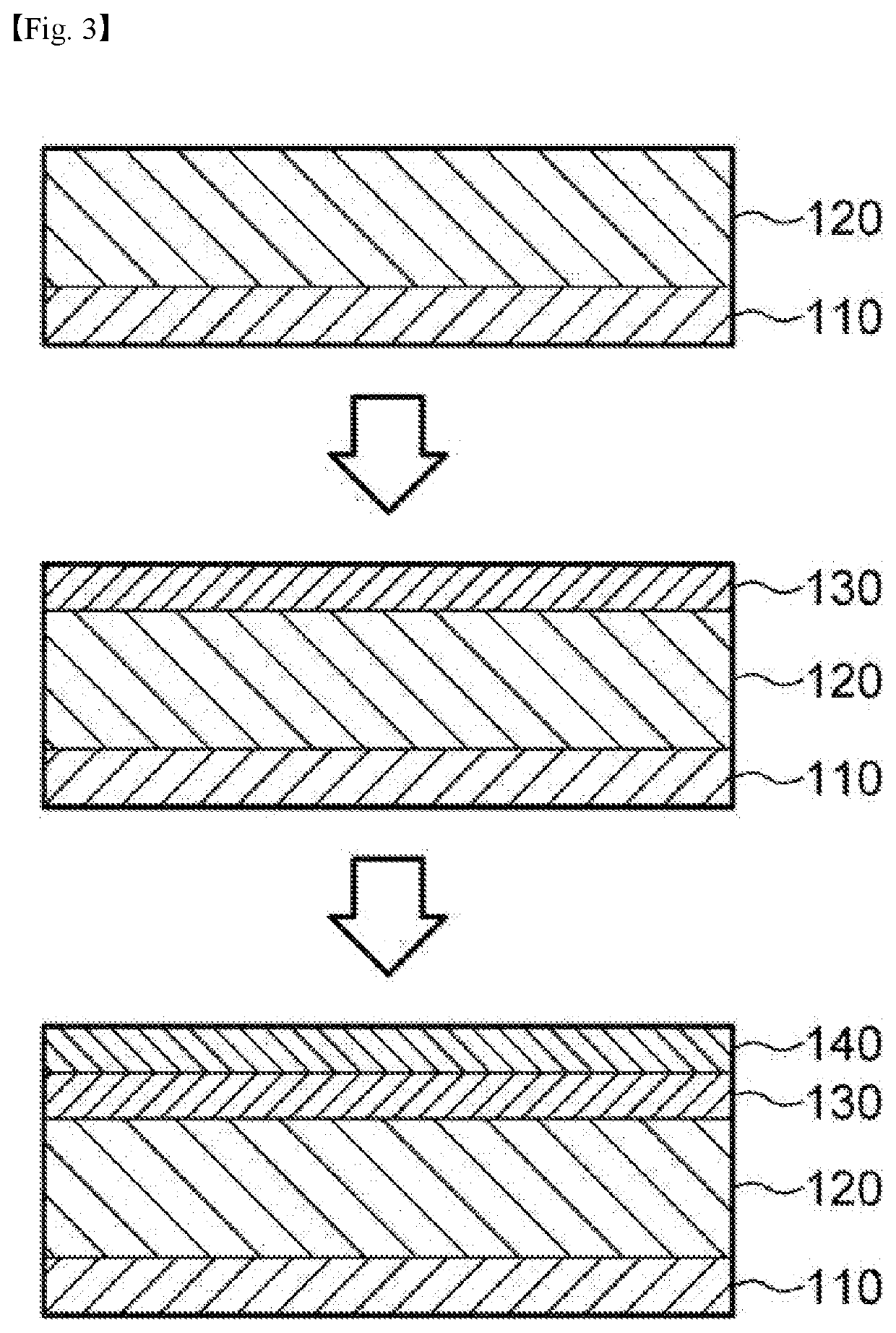Negative electrode for lithium secondary battery, lithium secondary battery comprising same, and manufacturing method therefor
a secondary battery and negative electrode technology, applied in the manufacturing process of electrodes, electrochemical generators, cell components, etc., can solve the problems of reducing the battery capacity, large initial irreversible capacity, so as to suppress the loss of lithium or side reaction of lithium, reduce the resistance, and reduce the effect of battery capacity
- Summary
- Abstract
- Description
- Claims
- Application Information
AI Technical Summary
Benefits of technology
Problems solved by technology
Method used
Image
Examples
example 1
[0105]Fabrication of Negative Electrode with Lithium Diffusion Rate Control Layer and Lithium Layer
[0106]The negative electrode of the above preparation example was placed in a chamber (150° C., 0.1 torr), and trimethylaluminum and H2O gas were injected with a pressure of 1 torr nitrogen gas at a ratio of 17:1. The atomic layer deposition process was repeatedly performed until the thickness of the Al2O3 layer became about 3 nm on the negative electrode mixture layer by the following reactions (A) and (B).
Al—OH*+Al(CH3)3+Al—O—Al(CH3)2*+CH4 (A)
Al—CH3*+H2O+Al—OH*+CH4 (B)
[0107]Then, a negative electrode was prepared by laminating a lithium thin film having a thickness of 10 μm.
[0108]Preparation of Half Coin Cell
[0109]Coin cells were prepared in the order of negative electrode / separator (porous film made of polypropylene (20 μm, Celgard)) / lithium foil by using lithium foil and stainless steel upper and lower plates as counter electrodes of the obtained negative electrode and prepared n...
example 2
[0110]A battery was manufactured in the same manner as in Example 1, except that the injection time of the electrolyte was changed to a time after 2 hours from the assembly of the coin cell.
example 3
[0113]Preparation Example of Positive Electrode
[0114]LiCoO2 SBR binder, CMC and acetylene black as the positive electrode active material were added to water in a weight ratio of 93:3:1.5:2.5 to prepare a positive electrode mixture. The mixture was uniformly coated on 10 μm aluminum foil and dried for 12 hours in a 50° C. vacuum oven to prepare a positive electrode.
[0115]Preparation of Mono Cells
[0116]1-stack mono cells were prepared in the order of a negative electrode / separator (polypropylene material porous film; 20 μm, Celgard) / positive electrode, using a positive electrode and a negative electrode having a lithium diffusion rate control layer and a lithium layer prepared in Example 1. The electrolyte was injected after 2 hours from the assembly of the mono cells At this time, the electrolyte is a mixture of ethylene carbonate and ethyl methyl carbonate in a mass ratio of 3:7.
PUM
| Property | Measurement | Unit |
|---|---|---|
| thickness | aaaaa | aaaaa |
| thickness | aaaaa | aaaaa |
| thickness | aaaaa | aaaaa |
Abstract
Description
Claims
Application Information
 Login to View More
Login to View More - R&D
- Intellectual Property
- Life Sciences
- Materials
- Tech Scout
- Unparalleled Data Quality
- Higher Quality Content
- 60% Fewer Hallucinations
Browse by: Latest US Patents, China's latest patents, Technical Efficacy Thesaurus, Application Domain, Technology Topic, Popular Technical Reports.
© 2025 PatSnap. All rights reserved.Legal|Privacy policy|Modern Slavery Act Transparency Statement|Sitemap|About US| Contact US: help@patsnap.com



